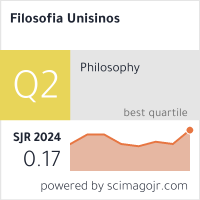Charcot, hysteria designer
Or the medical criticism of art
DOI:
https://doi.org/10.4013/%20fsu.2025.262.05Keywords:
science, art, naturalism, Charcot, Freud.Abstract
Article dedicated to reconstructing, through a biographical and bibliographical review, the scientific-aesthetic project of the Salpêtrière hospital in the second half of the 19th century, highlighting Martin Charcot and collaborators’ interest in art, especially drawing as an instrument for research, nosography, diagnosis, and teaching of hysteria. It aims to show that this interest took effect in the proposal of a reciprocal relationship of influence and collaboration between medical science and art, giving the former the status of medical criticism of art, with naturalism as its artistic ideal. It ends with a critical reflection that evaluates the results of such collaboration between science and art, as well as the consequences of this cooperation following the advent of Freudian psychoanalysis.
Downloads
Metrics
Downloads
Published
How to Cite
Issue
Section
License
Copyright (c) 2025 Francisco Verardi Bocca

This work is licensed under a Creative Commons Attribution 4.0 International License.
I grant the Filosofia Unisinos – Unisinos Journal of Philosophy the first publication of my article, licensed under Creative Commons Attribution license 4.0 (which allows sharing of work, recognition of authorship and initial publication in this journal).
I confirm that my article is not being submitted to another publication and has not been published in its entirely on another journal. I take full responsibility for its originality and I will also claim responsibility for charges from claims by third parties concerning the authorship of the article.










